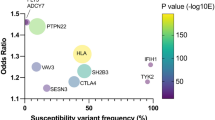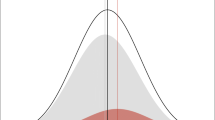Abstract
It is proposed that lead concentrations in the blood are related to intracellular glutathione and lead might be conjugated with glutathione non-enzymatically or enzymatically via glutathione S-transferase (GST). Essential hypertension is a complex, multifactorial and polygenic disease in which the underlying genetic components remain unknown. This study was aimed to investigate GST-mu1 (GSTM1) and GST-theta1 (GSTT1) gene polymorphisms in lead-exposed workers and their relationship with blood lead levels and leadrelated hypertension. To address the possible association, GSTM1 and GSTT1 (homozygous deletion vs. non-deleted) polymorphisms in 755 lead-exposed male workers were analyzed. GSTM1 and GSTT1 polymorphisms were determined using a Multiplex PCR. We observed significant association in positive alleles of GSTT1 (OR=1.593, 95% CI=1.157–2.194). However, no significant association in GSTM1 was observed with lead-related hypertension. For combined analysis with GSTM1 and GSTT1, both positive type (+/+) and GSTT1 positive (−/+) group showed significant differences between groups. These data suggest that the GSTT1 positive type polymorphism might be associated with lead-related hypertension in the lead-exposed male workers.
Similar content being viewed by others
References
Harrison, R. M. & Laxen, D. P. H. Lead pollution causes and control. New York: Chapman and Hall p. 1–168 (1981).
Finkel, A. J., Hamilton, A. & Hardy, H. L. Hamilton and hardy’s Industrial Toxicology. John Wright, PSG Inc., Bristol, UK. p. 1–428 (1983).
Centers for Disease Control and Prevention (CDC). Screening young children for lead poisoning, Atlanta, GA. p. 1–205 (1997).
Lanphear, B. P. et al. Primary prevention of childhood lead exposure: a randomized trial of dust control. Pediatrics 103:772–777 (1999).
Battistini, V. et al. Erythrocyte delta-aminolaevulic acid dehydrase activity in anemia. Br J Haematol 20:177–184 (1971).
Ribarov, S. R., Benov, L. C. & Benchev, I. C. The effect of lead on hemoglobin catalyzed lipid peroxidation. Biochim Biophys Acta 664:453–459 (1981).
Hsu, J. M. Lead toxicity as related to glutathione metabolism. J Nutr 37:26–33 (1981).
Clemens, M. R. & Waller, H. D. Lipid peroxidation in erythrocytes. Chem Phys Lipids 45:251–268 (1987).
Nakagawa, K. Decreased glutathione S-transferase activity in mice livers by acute treatment with lead independent of alteration in glutathione content. Toxicol Lett 56:13–17 (1991).
Sugawara, E. et al. Lipid peroxidation and concentration of glutathione in erythrocytes from workers exposed to lead. Br J Ind Med 48:239–242 (1991).
Hunaiti, A., Soud, M. & Khalil, A. Lead concentration and level of glutathione, glutathione S-transferase, reductase, and peroxidase in the blood of some occupational workers from Irbid city, Jordan. Sci Total Environ 170:95–100 (1995).
Hunaiti, A. A. & Soud, M. Effect of lead concentration on the level of glutathione, glutathione S-transferase, reductase and peroxidase inhuman blood. Sci Total Environ 248:45–50 (2000).
Oparil, S., Zaman, M. A. & Calhoun, D. A. Pathogenesis of hypertension. Ann Intern Med 139:761–776 (2003).
Ehret, G. B. Genome-wide association studies: contribution of genomics to understanding blood pressure and essential hypertension. Curr Hypertens Rep 12:17–25 (2010).
Hamilton, C. A. et al. Strategies to reduce oxidative stress in cardiovascular disease. Clin Sci (Lond) 106:219–234 (2004).
Kaplowitz, N., Aw, T. Y. & Ookhtens, M. The regulation of hepatic glutathione. Ann Rev Pharmacol Toxicol 25:715–744 (1985).
Hayes, J. D., Flanagan, J. U. & Jowsey, I. R. Glutathione transferases. Annu Rev Pharmacol Toxicol 45:51–88 (2005).
Frova, C. Glutathione transferases in the genomic era: newinsights and perspectives. Biomol Engin 23:149–169 (2006).
Fuciarelli, M. et al. Modulation of the GSTT1 activity by the GSTM1 phenotype in a sample of Italian farmworkers. Arch Toxicol 83:115–120 (2009).
Bolt, H. M. & Their, R. Relevance of the deletion polymorphisms of the glutathione S-transferases GSTT1 and GSTM1 in pharmacology and toxicology. Curr Drug Metab 7:613–628 (2006).
Di Pietro, G., Magno, L. A. & Rios-Santos, F. Glutathione S-transferases: an overview in cancer research. Expert Opin Drug Metab Toxicol 6:153–170 (2010).
Marinho, C. et al. GST M1/T1 and MTHFR polymorphisms as risk factors for hypertension. Biochem Biophys Res Commun 353:344–350 (2007).
Delles, C. et al. Glutathione S-transferase variants and hypertension. J Hypertens 26:1343–1352 (2008).
Bessa, S. S., Ali, E. M. & Hamdy, S. M. The role of glutathione Stransferase M1 and T1 gene polymorphisms and oxidative stress srelated parameters in Egyptian patients with essential hypertension. Eur J Intern Med 20:625–630 (2009).
Polimanti, R. et al. Glutathione S-transferase variants as risk factor for essential hypertension in Italian patients. Mol Cell Biochem 357:227–233 (2011).
Carmignani, M., Boscolo, P., Poma, A. & Volpe, A. R. Kininergic system and arterial hypertension following chronic exposure to inorganic lead. Immunopharmacology 4:105–110 (1999).
Carmignani, M. et al. Catcholamine and oxide nitric systems as targets of chronic lead exposure in inducing selective functional impairment. Life Sci 68:401–415 (2000).
Grizzo, L. T. & Cordellini, S. Perinatal Lead exposure affects nitric oxide and cyclooxygenase pathways in aorta of weaned rats. Toxicol Sci 103:207–214 (2008).
Glenn, B. S. et al. Changes in systolic blood pressure associated with lead in blood and bone. Epidemiology 17:538–544 (2006).
Glenn, S. B. et al. The longitudinal association of lead with blood pressure. Epidemiology 14:30–36 (2003).
Navas-Acien, A. et al. Bone lead levels and blood pressure endpoints: A Meta-Analysis. Epidemiology 19:496–504 (2008).
Fernandez, F. J. Micromethod for lead determination in whole blood by atomic absorption, with use of the graphite furnace. Clin Chem 21:558–561 (1975).
Abdel-Rahman, S. Z., el-Zein, R. A., Anwar, W. A. & Au, W. W. A multiplex PCR procedure for polymorphic analysis of GSTM1 and GSTT1 genes in population studies. Cancer Lett 107:229–233 (1996).
Author information
Authors and Affiliations
Corresponding author
Rights and permissions
About this article
Cite this article
Lee, BK., Lee, S.J., Joo, J.S. et al. Association of Glutathione S-transferase genes (GSTM1 and GSTT1) polymorphisms with hypertension in lead-exposed workers. Mol. Cell. Toxicol. 8, 203–208 (2012). https://doi.org/10.1007/s13273-012-0025-5
Received:
Accepted:
Published:
Issue Date:
DOI: https://doi.org/10.1007/s13273-012-0025-5




